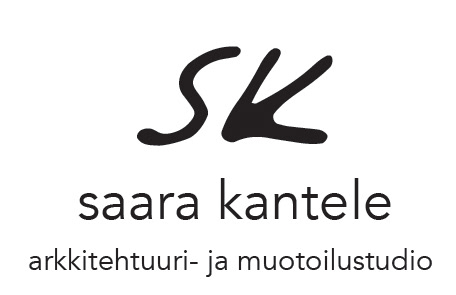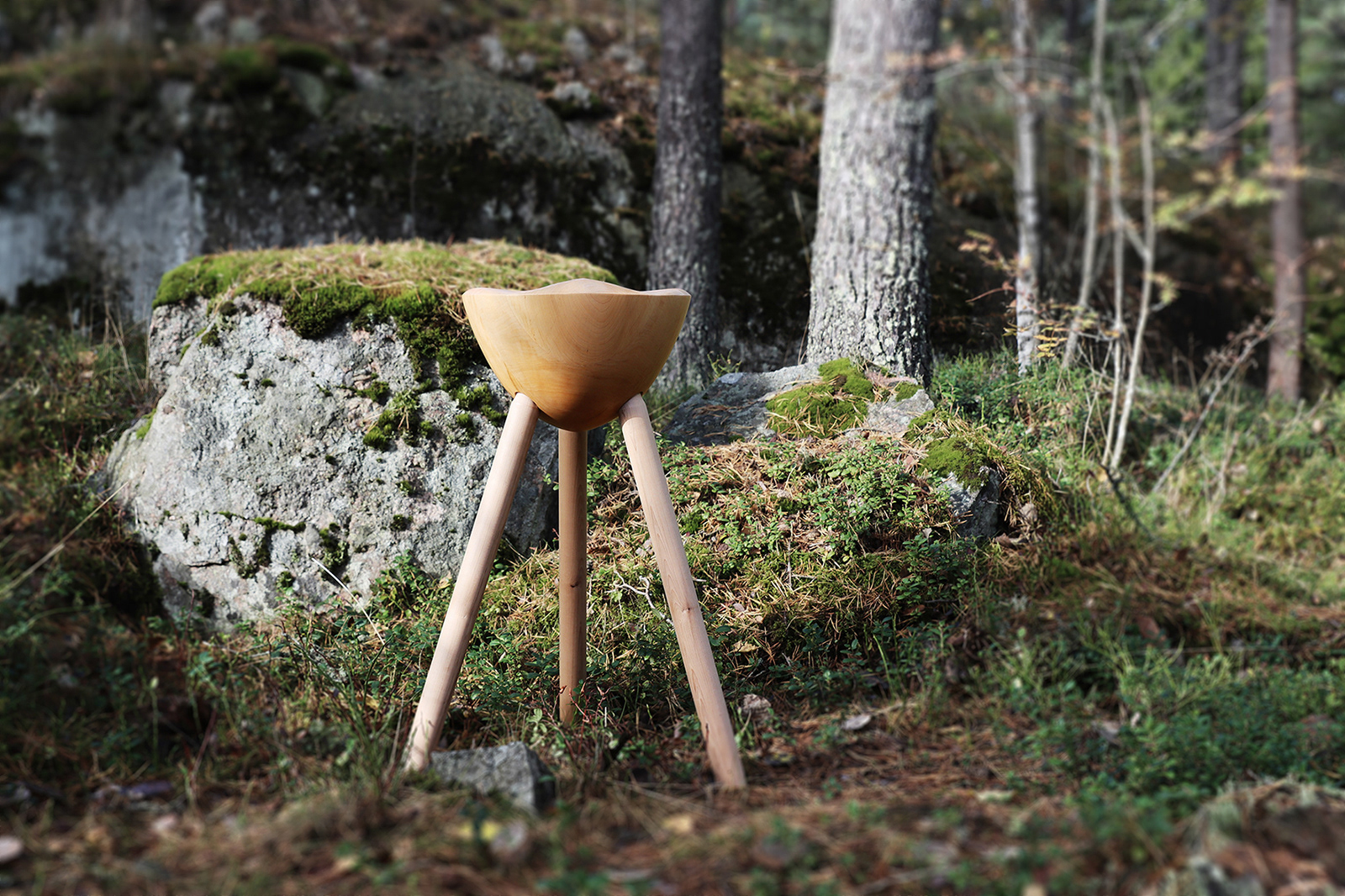
Stool made from two diverse tree species
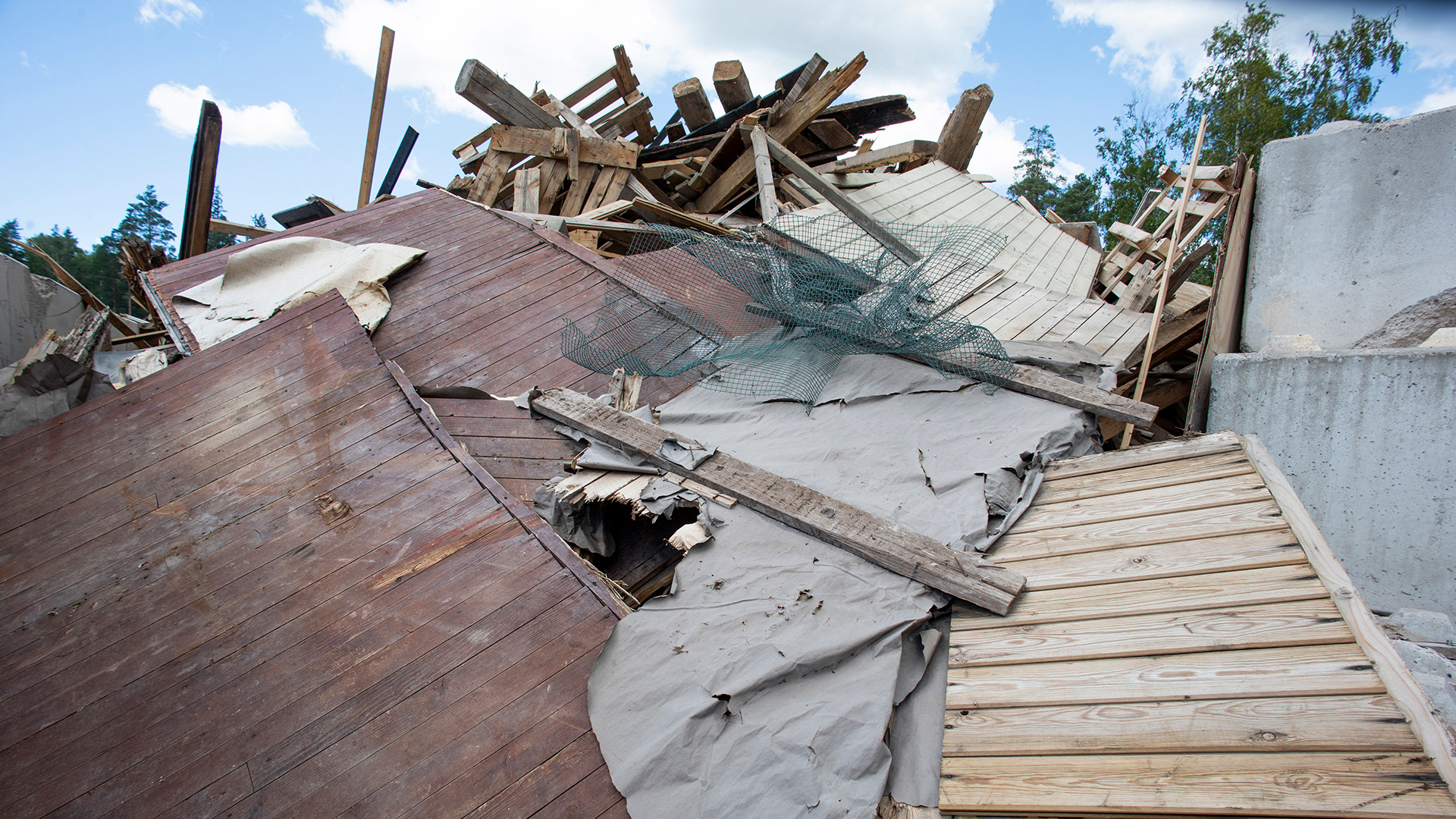
Half of all waste is from constructions
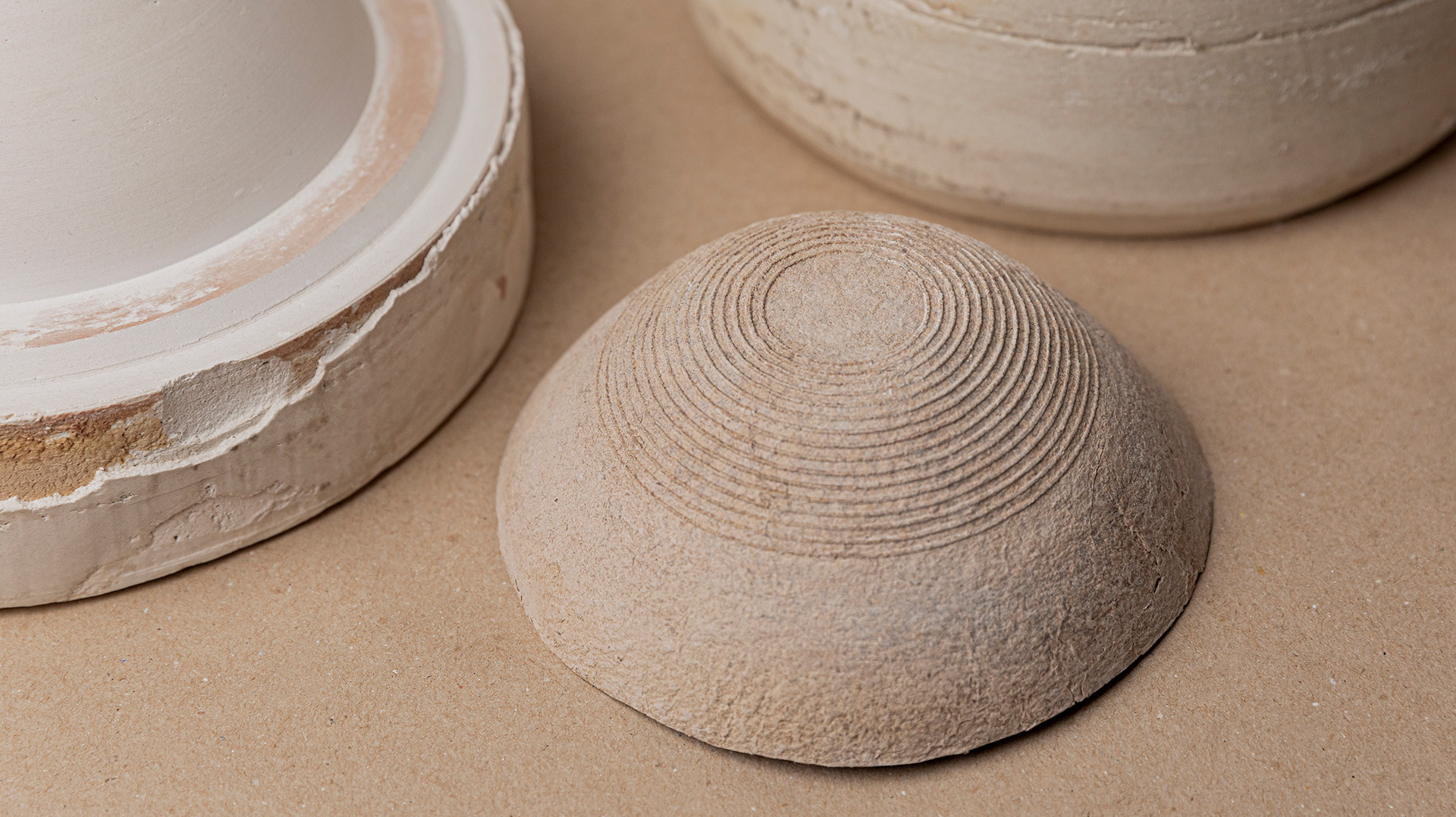
Alder fibre-based biomaterial study
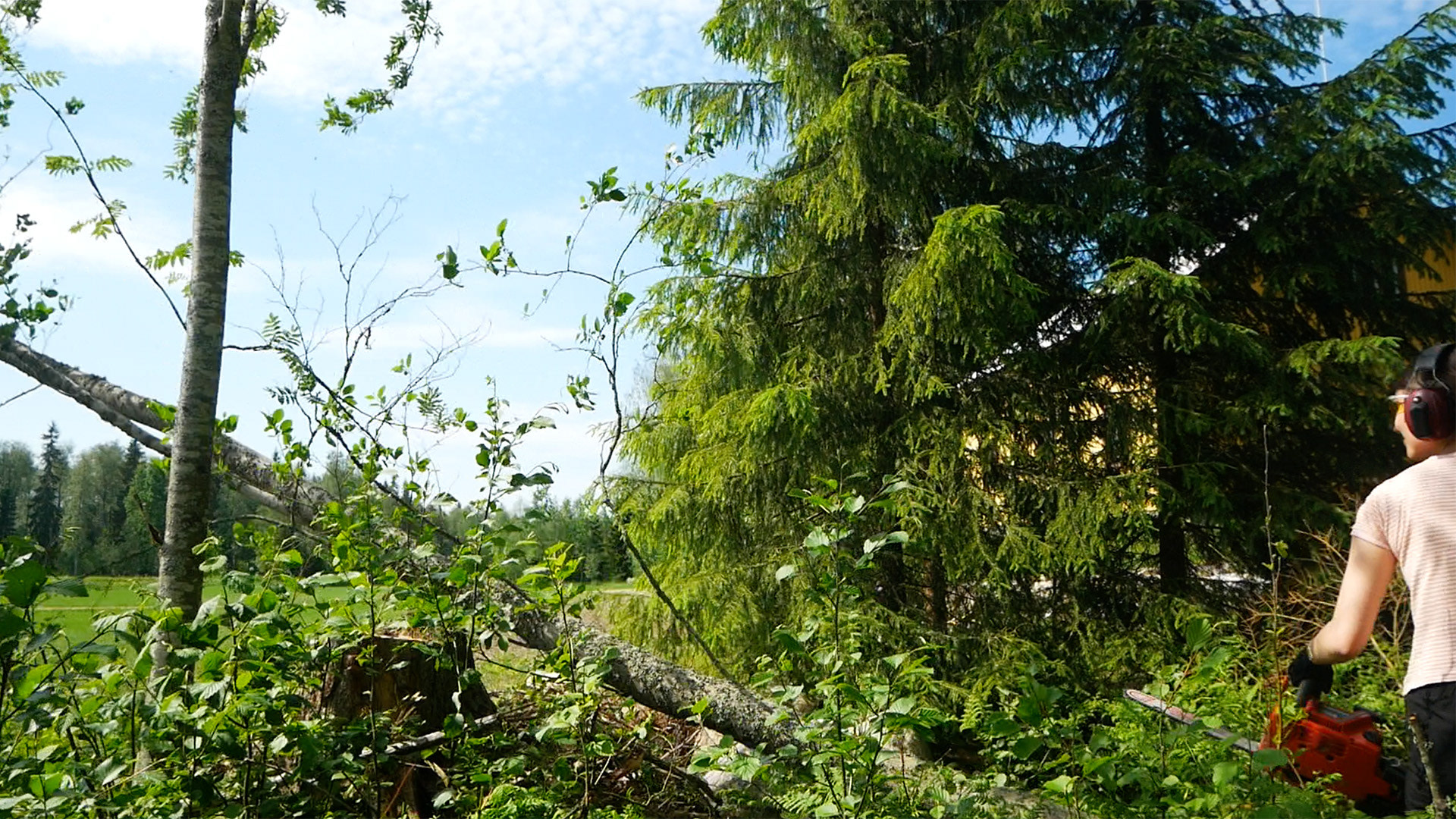
Cutting the alder tree
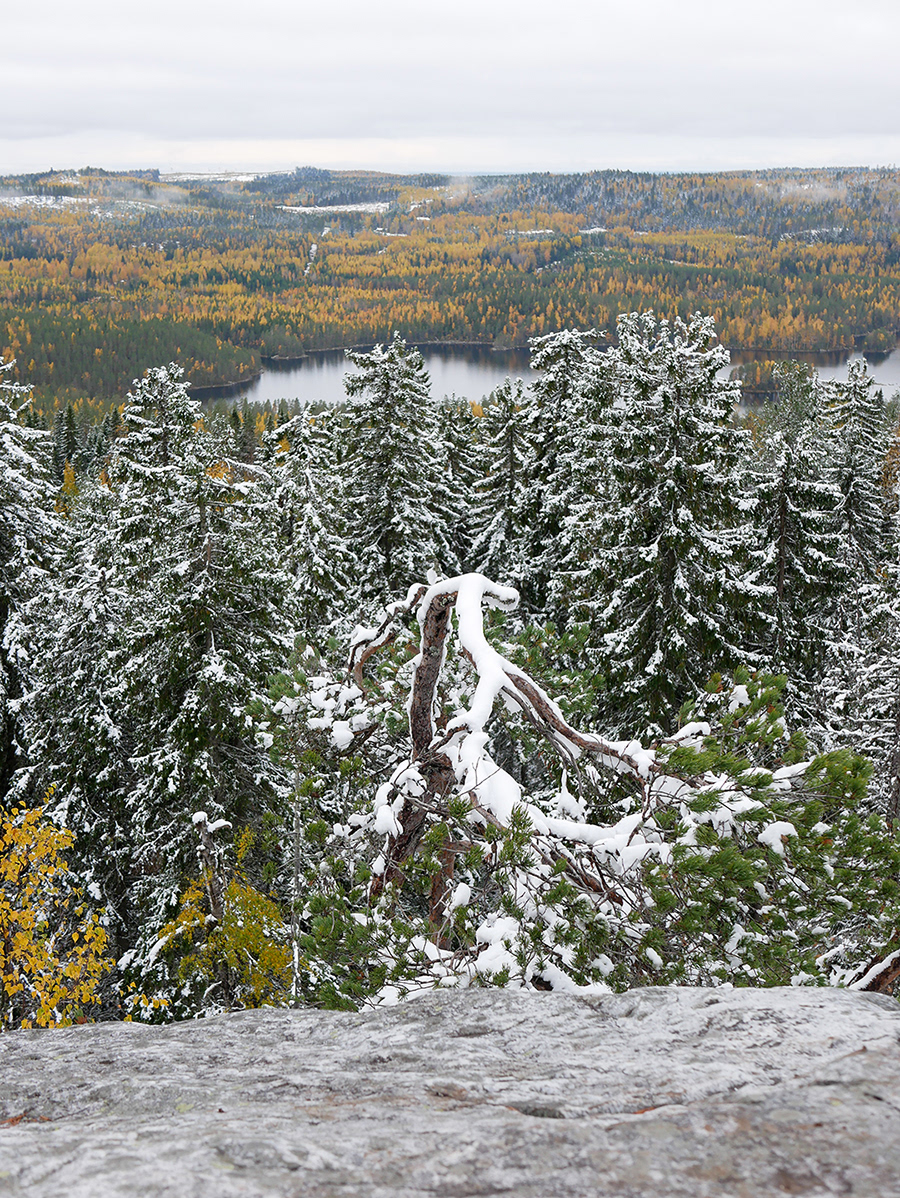
Forest landscape
Dutch Design Week 2022, Eindhoven 21–30.10.2022
Metsä – Forest from the designer's perspective
A quest to understand Finnish forests and build more thoughtful relationship with them in the context of design and society
This exhibition is part of a project gathering understanding about forests, trees and wood material and seeking solutions to contemporary dilemmas of the forest from designers perspective.
______________________________________________________________________________
The Alder Project – How to understand forests
The Forests and our relationship with them defines our future living conditions and affects other
species we are sharing the planet with. 80% of all the terrestrial species are living in forests. The
way we cultivate and use wood is unsustainable and monocultural. The typical clearcutting
method reduces biodiversity of forests and turns the forest carbon storage into a carbon source
for decades.
species we are sharing the planet with. 80% of all the terrestrial species are living in forests. The
way we cultivate and use wood is unsustainable and monocultural. The typical clearcutting
method reduces biodiversity of forests and turns the forest carbon storage into a carbon source
for decades.
The Alder Project is a deep dive into the tree as a being and material to
be used in design practices. It's about understanding the forests first hand. During the process
forest trips are made and documented, a alder tree is cut down, researched and used for
furniture while leftovers are processed as a new fibre-based biomaterial. Wood is studied and
used as a living Finnish tradition with new techniques.
be used in design practices. It's about understanding the forests first hand. During the process
forest trips are made and documented, a alder tree is cut down, researched and used for
furniture while leftovers are processed as a new fibre-based biomaterial. Wood is studied and
used as a living Finnish tradition with new techniques.
600 000 Finnish people own forest. The climate and the forest concerns us all. The
humane understanding of forests, and more considered use of them is vital for the generations to
come. Understanding, aroused questions and conversations between people are the key for building balanced relationship between the forest and the human race.
humane understanding of forests, and more considered use of them is vital for the generations to
come. Understanding, aroused questions and conversations between people are the key for building balanced relationship between the forest and the human race.
Series of black alder and rowan
In the Series of black alder and rowan, local species are used according to their properties for furniture process utilising both Finnish tradition and modern NC-technology.
Forests have been around for 370 million years and the vast biodiversity of the planet has been largely build to the biotope they create. Humans developed only 1,8 million year ago, but have already affected the planet so that we speak of the 6th mass extinction. For example, amid decreasing living environments today only 4% of the world mammals are wild animals, the vast majority humans or livestock.
Finland has diverse natural forests with around 25 native tree species. Today the forests are often planted monotonous by age and species of the trees due to the dominant forest management practices. Currently 12% of Finnish species which are known enough to evaluate are endangered. The most significant factors of changes in the forest biotopes are: renewing of forests, cultivation methods and decrease of old forests, large trees and rotten wood.
How should we develop these practices which are harmful to forest biotopes?
Recycled stool
What is waste and can we add value by using it? The Recycled stool raises questions of material wisdom and cascading of recycled wood, ie. using same material in multiple high-value forms after their initial use. In 2019 the humankind produced 13 000 kilograms of waste per person. In the context of forests, 2/3 of wood material removed from the forests was used to purposes lasting less than 3 months, such as soft papers and energy, after which the carbon disperses into the atmosphere. Around half of the waste produced in the EU is from the building construction or demolition.
The Recycled stool only utilises material found from the dustbins of wood workshops. The material is processed removing any possible parts containing metal, glued and formed with NC-machinery.
